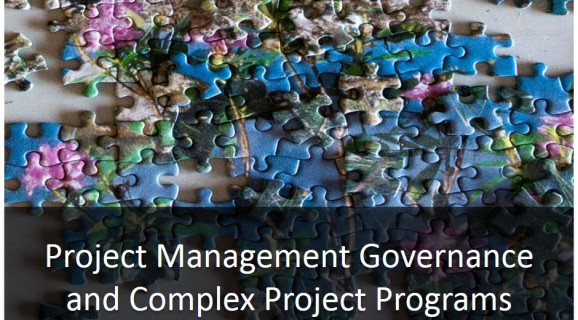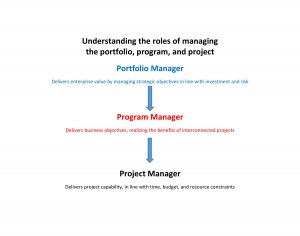
Last time, I looked at segregating the disciplines of project management and organisational management. In that article I examined a number of principles which included:
- Getting the right people
- Project ownership
- Stakeholder management vs. project management
- Project and organizational structures
Having identified these project management governance principles and how they apply to a single project, in this article I examine how governance procedures can be extended to a program of simultaneous projects, which may or may not be interrelated.
Introducing the concept of the project program
It would be unusual that an organisation has a single project on the go at any given time. In all probability, most organisations are undertaking multiple projects of multiple sizes and complexities on a continual basis. These projects will require different resources – human, technical, and financial – and complete at different speeds.
This program of projects will require two distinct functions of management: the first will be an overall program manager and the second is the management of the projects.
The complexity of managing a program of projects
The more projects that an organisation has on the go at the same time, the more complex will be the overall program. For benefits to be realised, these projects must be managed at a high level to ensure that they satisfy a number of key demands, but primarily:
- Each project must align with the objectives of the business strategy
- Each must deliver benefits to the organisation as a single entity
In order for these two demands to be met, it is the role of the program manager to make certain that projects within the program are interconnected.
The portfolio manager will therefore be dealing with a highly complex environment. He or she is likely to be overseeing multiple projects as well as remaining responsible for his or her own operational role. The project program manager will be responsible for costs, revenues, and profit associated with the entire program.
The simplicity of managing a single project
In contrast to the wide-ranging role of the program manager, the project manager’s responsibility is far narrower: he or she will be tasked with delivering a single project on time and within budget. The program manager may be the one who dictates the project objectives.
Similarities between program and project management
Now that I’ve discussed the major differences between the management of the program and the projects within that portfolio, it’s worth looking at the similarities.
The program structure is supported by the same principles of project management governance that also provides the framework for governance of single projects. Project management is segregated from program management, and while projects have identified start and finish dates a program may continue for several years.
The program manager will coordinate and oversee the projects within the program with the aim of delivering the benefits expected by the business’s strategic objectives.
Overseeing all is the portfolio manager. He or she effectively directs the investment made by the organisation in its programs of projects, ensuring consistency across all programs in terms of meeting the strategic vision of the business.


